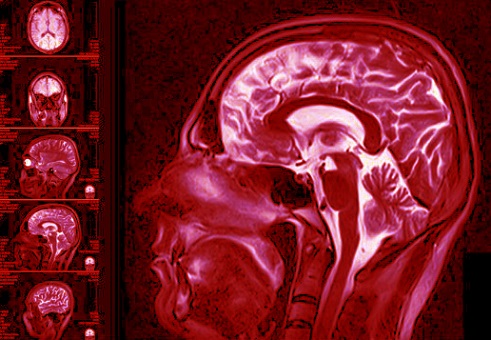Nikhil Prasad Fact checked by:Thailand Medical News Team Dec 29, 2024 11 months, 3 weeks, 2 days, 2 hours, 9 minutes ago
Medical News: Glioblastoma, one of the deadliest brain tumors, has long challenged medical researchers with its resistance to conventional treatments and poor patient survival rates. A recent study provides groundbreaking insights into the mechanisms of cell death in glioblastoma, specifically focusing on ferroptosis and the role of CIRBP (Cold-Inducible RNA-Binding Protein).
 Ferroptosis and Glioblastoma Insights from CIRBP Research
Ferroptosis and Glioblastoma Insights from CIRBP Research
Researchers from Zhongshan Hospital of Fudan University, Jiangyin Clinical College of Xuzhou Medical University, and the Naval Medical University in China collaborated to unravel these findings, which could pave the way for novel therapeutic approaches.
Understanding Glioblastoma and Its Challenges
Glioblastoma is a type of brain tumor that originates from neuroepithelial cells. Known for its rapid growth and diffuse infiltration into brain tissue, glioblastoma is resistant to most existing treatments, including surgery, chemotherapy, and radiotherapy. Conventional therapies, such as the alkylating agent temozolomide, provide limited improvement in patient outcomes, with a median survival time of only 14.6 months for patients with certain genetic markers. This grim prognosis highlights the urgency of developing new, more effective treatments.
Ferroptosis, a non-apoptotic form of programmed cell death, has recently emerged as a promising area of research in cancer therapy. Unlike apoptosis, ferroptosis is driven by iron-dependent lipid peroxidation and oxidative stress. This
Medical News report explores how ferroptosis can be manipulated to target glioblastoma cells, shedding light on the molecular pathways involved and the potential of CIRBP as a therapeutic target.
What Is Ferroptosis
Ferroptosis is a distinct form of cell death characterized by the accumulation of lipid peroxides and reactive oxygen species (ROS) due to iron-dependent reactions. Unlike apoptosis, which involves programmed cell dismantling, ferroptosis results from oxidative damage to cellular membranes. The process is tightly regulated by proteins such as glutathione peroxidase 4 (GPX4), which mitigates lipid peroxidation, and systems like Xc⁻, responsible for cellular antioxidant defenses. Iron’s role in driving ferroptosis makes it a unique target in glioblastoma treatment, as glioblastoma cells are particularly sensitive to iron-mediated oxidative damage.
CIRBP’s Role in Ferroptosis
The research team identified CIRBP as a key regulator of ferroptosis in glioblastoma cells. CIRBP, which is typically activated under stress conditions such as hypoxia and low temperatures, influences cellular responses to oxidative stress. In glioblastoma, CIRBP appears to modulate ferroptosis by affecting the expression of key proteins involved in the process.
Using RNA sequencing, the study showed that CIRBP expression increases significantly during ferroptosis induced by erastin, a known ferroptosis activator. The experiments demonstrated that when CIRBP was overexpressed, glioblastom
a cells became more sensitive to erastin, resulting in enhanced ferroptotic cell death. Conversely, suppressing CIRBP expression reduced the cells' sensitivity to ferroptosis, allowing them to survive despite the presence of erastin.
Key Findings of the Study
-CIRBP Expression Levels and Glioblastoma Prognosis
Data analysis revealed that patients with lower CIRBP levels tend to have worse prognoses. This suggests that CIRBP plays a tumor-suppressive role in glioblastoma.
-Transcriptional Changes in Ferroptosis
The researchers identified over 1,000 differentially expressed genes (DEGs) associated with ferroptosis in glioblastoma cells. Among these, the downregulation of GPX4 and SLC7A11 was particularly significant, confirming ferroptosis induction.
Functional Validation
Through laboratory experiments, the team showed that manipulating CIRBP levels directly affects glioblastoma cell proliferation and sensitivity to ferroptosis. Overexpressing CIRBP inhibited tumor growth, while its suppression enhanced tumor cell survival.
Gene Networks
The study uncovered complex regulatory networks involving long non-coding RNAs (lncRNAs), microRNAs (miRNAs), and messenger RNAs (mRNAs). CIRBP was identified as a central node in these networks, influencing ferroptosis pathways and glioblastoma progression.
Potential Implications for Treatment
The findings highlight the therapeutic potential of targeting CIRBP and ferroptosis pathways in glioblastoma. By increasing CIRBP expression or mimicking its effects, researchers could enhance the sensitivity of glioblastoma cells to ferroptosis-inducing treatments. This strategy could complement existing therapies, such as temozolomide, and improve patient outcomes.
Furthermore, the study’s insights into the molecular mechanisms of ferroptosis provide a foundation for developing drugs that specifically target ferroptosis-related proteins, such as GPX4 and SLC7A11. Combining these drugs with CIRBP modulation could create a synergistic effect, effectively combating glioblastoma.
Conclusions
The study is a significant step forward in glioblastoma research. By uncovering the role of CIRBP in ferroptosis, the team has opened new avenues for targeted therapy against this aggressive tumor.
Ferroptosis represents a promising frontier in cancer treatment, and the modulation of CIRBP offers a novel approach to enhance its therapeutic potential. Future research should focus on translating these findings into clinical applications, exploring how CIRBP-targeted therapies can be integrated into standard glioblastoma treatment protocols.
The study findings were published in the peer-reviewed journal: Biomedicines.
https://www.mdpi.com/2227-9059/13/1/41
For the latest on Glioblastoma, keep on logging to Thailand
Medical News.
Read Also:
https://www.thailandmedical.news/news/citrus-peel-oils-as-potential-game-changers-in-brain-cancer-therapy
https://www.thailandmedical.news/news/istradefylline-provides-new-hope-against-glioblastoma-
https://www.thailandmedical.news/news/metabolic-changes-in-glioblastoma-and-the-role-of-glutaminase-2
https://www.thailandmedical.news/articles/cancer
